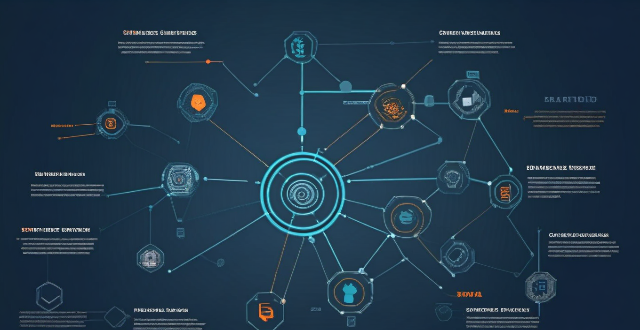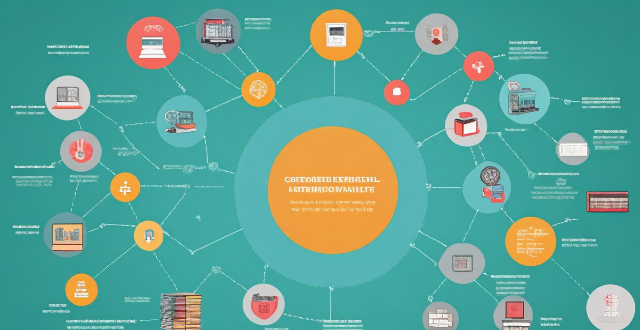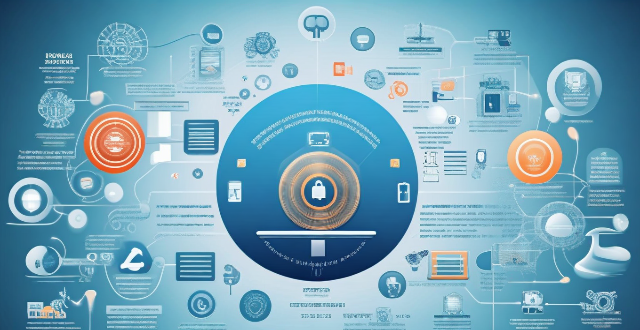Fund Potential

What is the difference between a fixed deposit and a mutual fund ?
Fixed deposits offer guaranteed returns and low risk but limited growth potential, while mutual funds provide higher growth potential through diversified portfolios but carry more risk.

How do I choose a sustainable investment fund ?
Choosing a sustainable investment fund requires careful consideration of various factors, including your investment goals, the fund's ESG criteria and performance history, the experience of the fund manager, the fund's holdings and alignment with your values, fees and expenses, and ongoing monitoring of your investment. By following these steps, you can select a sustainable fund that aligns with your financial goals and personal values.

Are there any low-risk investment options that still offer wealth growth potential ?
Investing always comes with a certain level of risk, but there are some investment options that are considered to be relatively low-risk while still offering the potential for wealth growth. These include savings accounts and certificates of deposit (CDs), bonds, mutual funds and exchange-traded funds (ETFs), and real estate investment trusts (REITs). It's important to do your research and understand the risks involved before making any investment decisions.

What are the benefits of having an emergency fund, and how much should it be ?
The importance of an emergency fund cannot be overstated, serving as a financial buffer during unforeseen events like job loss or medical issues. Key benefits include reduced stress, avoidance of debt, improved resilience, and protection of credit scores. The recommended amount varies but is often three to six months' worth of essential expenses, adjusted based on individual circumstances.

How can governments fund economic stimulus plans effectively ?
Governments can fund economic stimulus plans through increased government spending, tax cuts, issuing bonds, monetary policy measures, privatizing assets, international aid and loans, and budget reallocation.

How does the issuance of green bonds benefit environmental projects ?
Green bonds are financial instruments designed to fund environmentally friendly projects, offering benefits such as increased funding opportunities, improved project visibility, long-term financing, risk mitigation, market growth and innovation, policy and regulatory support, and community and environmental impact. These bonds not only benefit the specific environmental projects they aim to fund but also contribute to a broader shift towards sustainable finance and environmental stewardship.

What are the potential drawbacks or challenges of implementing blockchain ?
The article discusses several potential issues with blockchain technology, including lack of regulation, scalability concerns, security vulnerabilities, and interoperability challenges. It highlights the need for clear legal and compliance guidelines, tax treatment standards, improved transaction speeds, reduced energy consumption, ongoing security measures, thorough smart contract testing, and increased standardization across different blockchains. Overall, while blockchain offers many potential benefits, these challenges must be addressed in order for the technology to reach its full potential.

What is the significance of the Green Climate Fund in supporting climate initiatives globally ?
The Green Climate Fund (GCF) supports climate initiatives globally by providing financial and technical resources for mitigation and adaptation projects. It encourages private sector participation, strengthens institutions, and promotes gender equality and social inclusion in climate actions.

What are some potential solutions to combat climate change ?
Potential Solutions to Combat Climate Change

What are some successful women-led philanthropic projects that have made a significant impact in their communities ?
The article discusses several successful women-led philanthropic projects that have made significant impacts in their respective fields. These include The Malala Fund, which aims to empower girls' education globally; The Empowerment Center for Women in Saudi Arabia, which provides skills training and job opportunities for women; The Global Fund for Women, which supports grassroots women's groups worldwide; The Akilah Institute, which offers quality education and leadership training to young women in Zimbabwe; and The Women's Refugee Commission, which advocates for the protection of refugee women and children.

Can you explain the concept of market capitalization and its significance in stock analysis ?
Market capitalization is a crucial financial metric that reflects the total dollar value of a company's outstanding shares. It is calculated by multiplying the current market price per share by the total number of outstanding shares. Market cap helps investors and analysts assess a company's size and potential growth opportunities, serving as a fundamental tool in stock analysis. Large-cap stocks represent well-established companies, while mid-cap and small-cap stocks indicate potential for growth but come with higher risks. Market cap also influences investment strategies, such as diversification and index fund investing, and is used in valuation metrics like P/B and P/E ratios. Understanding market cap allows for informed decisions on portfolio construction, risk management, and valuation assessments.

What are the potential benefits and drawbacks of remote work in the future ?
The potential benefits of remote work in the future include flexibility and enhanced work-life balance, productivity gains, cost savings, access to global talent, and a positive environmental impact. However, there are also potential drawbacks such as isolation and lack of social interaction, communication challenges, work-life boundary blurring, management and supervision issues, and security risks. It is important for individuals and organizations to consider these factors when deciding on the feasibility and implementation of remote work arrangements.

What are the potential risks and challenges associated with implementing CSR initiatives ?
Implementing Corporate Social Responsibility (CSR) initiatives can bring benefits to a company, but also comes with potential risks and challenges. These include lack of clear goals and objectives, limited resources, stakeholder pressure, legal and regulatory issues, difficulty measuring impact, and potential backlash from stakeholders. Companies need to carefully consider these issues before committing to CSR efforts, and should work to mitigate any potential risks through careful planning and execution.

Is there a specific formula for allocating funds in a startup budget ?
This guide provides a structured approach for startup budget allocation, emphasizing the importance of understanding the basic components of a budget and key areas of investment such as product development, marketing and sales, operational expenses, and contingency funds. It suggests following the 50/30/20 rule as a starting point and emphasizes the need for regular reviews and adaptability to ensure scalability and growth.

What are some effective personal finance management strategies ?
Managing personal finances effectively is crucial for achieving financial stability and long-term success. Here are some effective personal finance management strategies: 1. Create a budget that tracks income, expenses, savings, and adjustments. 2. Build an emergency fund with at least 3-6 months' worth of living expenses in a high-yield savings account or money market fund. 3. Pay off high-interest debt using the snowball or avalanche method. 4. Invest for long-term goals by starting early, diversifying, and staying consistent. 5. Protect your finances with health insurance, disability insurance, and life insurance. 6. Plan for retirement by starting early, maximizing contributions, and investing wisely. 7. Educate yourself through reading books, taking courses, and seeking professional advice.

How can educators identify and nurture potential leaders within their classrooms ?
Educators play a pivotal role in identifying and nurturing potential leaders within their classrooms. They can do this by observing student behavior, assessing interests and abilities, recognizing diverse leadership styles, providing opportunities for leadership development, offering mentorship and support, and fostering a positive learning environment. By following these steps, educators can effectively identify and nurture potential leaders within their classrooms.

What are the potential risks and rewards of investing in cryptocurrency ?
Investing in cryptocurrency can be a lucrative venture, but it also comes with its own set of potential risks and rewards. In this article, we will explore the various factors that investors should consider before diving into the world of cryptocurrencies. One of the biggest potential rewards of investing in cryptocurrency is the possibility of high returns. Many investors have seen significant gains from their investments in cryptocurrencies, particularly during times when the market is experiencing rapid growth. Another potential reward of investing in cryptocurrency is the decentralized nature of the technology. Unlike traditional financial systems, which are controlled by central authorities, cryptocurrencies operate on a decentralized network that allows for greater transparency and security. Finally, investing in cryptocurrency can also provide investors with access to innovative new technologies and ideas. As the industry continues to evolve, there will be many opportunities for investors to get involved in new projects and technologies that have the potential to revolutionize the way we think about money and finance. Despite these potential rewards, there are also many potential risks associated with investing in cryptocurrency. One of the biggest risks associated with investing in cryptocurrency is its volatility. The value of cryptocurrencies can fluctuate rapidly and unpredictably, making it difficult to predict future prices. This means that investors could potentially lose a significant portion of their investment if they are not careful. Another risk associated with investing in cryptocurrency is security risks. Since cryptocurrencies are stored in digital wallets, they are vulnerable to hacking and other forms of cybercrime. If an investor's wallet is compromised, they could lose all of their funds. Finally, there is also a risk associated with regulatory changes. Governments around the world are still figuring out how to regulate cryptocurrencies, and new regulations could potentially impact the value of certain coins. This means that investors need to stay up-to-date on any regulatory changes that may affect their investments. In conclusion, while there are certainly risks associated with investing in cryptocurrency, there are also many potential rewards for those who are willing to take a chance. By carefully considering these factors and doing your research before investing, you can make informed decisions about whether or not cryptocurrency is right for you.

Are there any potential side effects of switching to a gluten-free diet ?
Switching to a gluten-free diet can have several potential side effects, including nutrient deficiencies, digestive issues, weight gain, headaches and fatigue, and higher cost. It is important to be aware of these potential side effects and take steps to ensure adequate nutrition on a gluten-free diet. Consultation with a healthcare professional is recommended before making any significant changes to your diet.

What are the potential economic impacts of increased climate variability ?
This article discusses the potential economic impacts of increased climate variability on various sectors, including agriculture, water resources, energy, and tourism. It highlights how changes in weather patterns can lead to reduced crop yields, increased input costs, loss of biodiversity, droughts and floods, reduced water availability, higher demand for cooling systems, altered tourist destinations, and extreme weather events. The article emphasizes the importance of recognizing these potential impacts and taking steps to mitigate them through sustainable practices and adaptation strategies to build a more resilient economy that can withstand the challenges posed by a changing climate.

Can you explain how blockchain technology works and its potential applications ?
Blockchain technology is a decentralized, digital ledger that records transactions in a secure and transparent manner. It works through a peer-to-peer network of computers (nodes) without a central authority, using cryptography to secure data and verify participants' identities. A consensus mechanism ensures all nodes agree on the state of the ledger, making it immutable and transparent. Transactions are validated, grouped into blocks, added to the chain, and distributed to all nodes. Potential applications include finance (cryptocurrencies, smart contracts, remittances), non-financial areas (supply chain management, health records, voting systems, identity verification), and other sectors like real estate and intellectual property rights. Blockchain promises increased efficiency, security, and transparency across various industries.

What is the future potential of compressed air energy storage (CAES) ?
Compressed air energy storage (CAES) is a promising technology that has the potential to revolutionize the way we store and use energy. Key points about its future potential include increased efficiency and scalability, low cost and long lifespan, environmental benefits, and integration with other technologies. CAES systems can be scaled up or down depending on the amount of energy storage required and offer good value for money over their lifetime. They also have a long lifespan, typically lasting 20 years or more with proper maintenance. Additionally, CAES systems can help reduce carbon emissions by using renewable energy sources such as wind and solar. Finally, they can stabilize the grid during peak demand periods and be combined with other forms of energy storage to create hybrid systems that offer even greater flexibility and efficiency.

What are the potential consequences of not reducing greenhouse gas emissions ?
Not reducing greenhouse gas emissions can have severe consequences for our planet, including climate change, ecosystem impacts, human health and well-being, economic impacts, and social and political impacts. Rising temperatures, extreme weather events, sea level rise, habitat loss, species extinction, food web disruptions, poor air quality, water scarcity, loss of livelihoods, agricultural productivity, infrastructure damage, energy demand, migration, resource wars, and political instability are all potential consequences of not taking action to reduce greenhouse gas emissions. It is crucial that we take action to mitigate these potential consequences and protect our planet for future generations.

How can climate finance be leveraged to support renewable energy projects ?
Climate finance plays a crucial role in supporting renewable energy projects. Here are some ways to leverage it: 1. Public-Private Partnerships (PPPs) can be used to attract private investment into renewable energy projects. 2. Green Bonds can be issued to fund environmentally friendly projects such as solar and wind farms. 3. Carbon Pricing Mechanisms can generate revenue that can be invested in renewable energy projects. 4. International Climate Finance Initiatives can provide funding for renewable energy projects in developing countries. 5. Crowdfunding Platforms offer another way to raise funds for renewable energy projects. By using a combination of these strategies, we can accelerate the transition towards a more sustainable future.

What are the potential benefits of establishing a lunar base ?
**Heading: Potential Benefits of Establishing a Lunar Base** - **Advancements in Science and Technology:** Research opportunities in various fields, technological advancements in engineering and manufacturing, and testing new equipment for future missions. - **Economic Opportunities:** Job creation across industries, need for support staff, and the emergence of a new industry focused on lunar base operations. - **Energy Production:** Ideal location for solar power generation, potential for energy export to Earth, and development of efficient solar technology with Earth applications. - **Space Exploration and Travel:** Stepping stone for deeper space exploration, testing new propulsion systems and spacecraft designs, and paving the way for human settlements on other planets or moons. - **International Cooperation and Diplomacy:** Requirement for international collaboration, fostering diplomatic relations, promoting peaceful cooperation among nations, and encouraging global cooperation in addressing shared challenges.

How do I allocate funds for different educational needs in my budget plan ?
Education is crucial for personal growth, and budgeting for it is essential. Here's how to allocate funds effectively: determine goals, assess finances, create an education fund, prioritize expenses, use a budgeting tool, cut unnecessary expenses, seek financial aid, consider part-time work, and reevaluate regularly.

How do environmental subsidy policies affect sustainable development ?
This topic summary discusses the impact of environmental subsidy policies on sustainable development. These policies aim to promote renewable energy, reduce pollution, conserve natural resources, and promote eco-friendly technologies through financial incentives provided by governments. However, challenges such as limited funding, inefficient allocation of funds, and unintended consequences can hinder their effectiveness. To maximize their impact, it is crucial to ensure efficient allocation of funds and consider the broader impact of these policies.

What is the current state of fusion power research and its potential as an ultimate renewable energy source ?
Fusion power research aims to harness energy from fusing atomic nuclei, similar to the sun's process. Key developments include the ITER project, breakthroughs in magnetic confinement fusion, and advances in inertial confinement fusion. Challenges include technical hurdles, economic viability, and safety concerns. Fusion power has potential as an ultimate renewable energy source due to its unlimited and clean energy production, minimal environmental impact, and long-term sustainability.

How do environmental subsidy policies impact economic growth ?
The text discusses the impact of environmental subsidy policies on economic growth, highlighting both positive and negative effects. Positive impacts include stimulating innovation and technology development, enhancing energy efficiency, creating job opportunities, and improving public health. Negative impacts encompass distorting market incentives, increasing government expenditures, potential for carbon lock-in, and global trade implications. It concludes that while environmental subsidies have the potential to foster economic growth, they must be carefully designed to avoid adverse effects and contribute positively to sustainable economic development.

What are some examples of successful sports charity events ?
Successful sports charity events like the Nike Foundation's "Girl Effect" Marathon, The Komen Race for the Cure, and The Wounded Warrior Project's Carry Forward 5K have raised millions of dollars for various causes by combining the excitement of sports with philanthropy. These events engage participants in physical activity, raise funds and awareness for important causes, and create a sense of community among participants and supporters.